
by Scott Martin Photography | Apr 9, 2012 | Blog, Landscapes, Naturescapes, Travel
Arches National Park contains an incredible display of some of the most interesting geologic formations on the planet and as the name implies, many of them are aches. In fact, there are over two thousand natural stone arches in the park. Probably the most famous arch in the park is Delicate arch, which requires a little hiking to get to, however spending a sunset at the arch is certainly one of the best sunsets you will ever see.
Delicate Arch lies on the edge of a precipice about one thousand feet above a salt valley and can be viewed from either side of the valley, although from the opposite side of the valley you are probably a mile or so from the arch. Deb and I observed the arch from both sides of the valley, which made for an enjoyable afternoon of hiking, although carrying thirty pounds of camera gear felt like three hundred pounds by the time we were finished.
We first hiked the Delicate Arch Viewpoint trail, which is an easy 1.8 mile loop that gains about three hundred feet in elevation from the trailhead. The view across the salt valley to the arch is impressive however you will need a long lens to photograph the arch from this vantage point. This first shot was taken from the natural amphitheatre across the valley from the arch with a 400mm lens. The little guy in a bright red shirt sitting alone on a boulder looking at the arch makes this shot.

The hike to the base of the arch is a bit more arduous, and climbs about 500 feet over a trail that creates a round trip of just over three miles. It’s an interesting trail in that you don’t see the arch until the last few feet of the hike, but what an incredible sight when you come out from walking along a sandstone wall and catch that first view of the arch. About five hundred feet before reaching the top of the trail, your can see Framers Arch in the sandstone wall that blocks the view of Delicate Arch. You have to climb up the wall about twenty feet, but viewing Delicate Arch through Framers Arch makes for a good photograph.
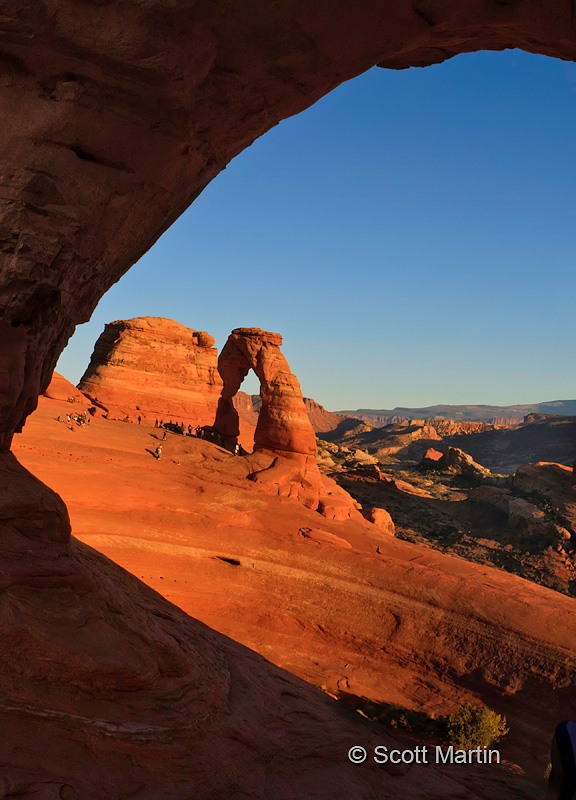
Delicate Arch overlooks a salt valley with the La Sal mountain range in the back ground.
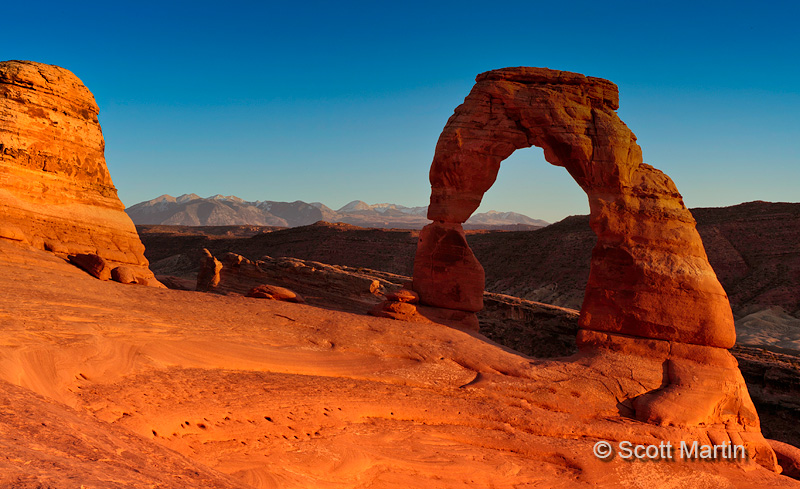
As the sun goes down over the horizon the natural red rocks take on an amazing colour.
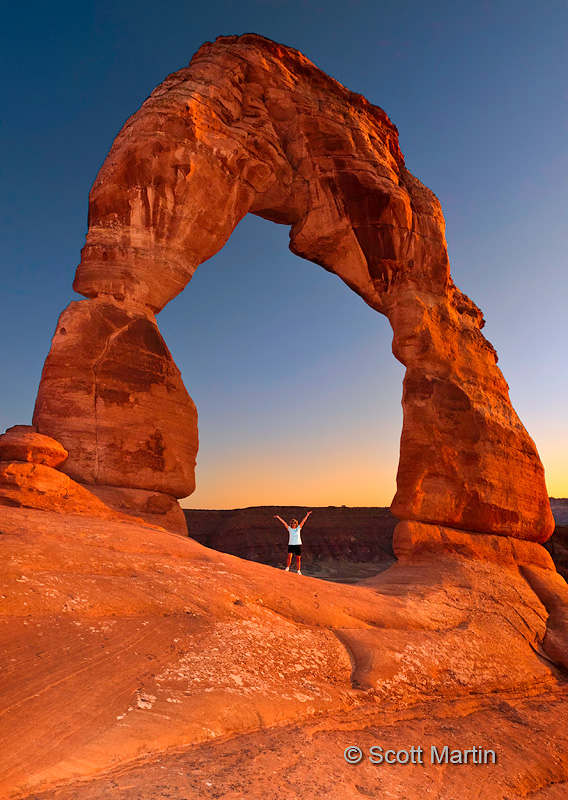
Sunset at Delicate Arch.
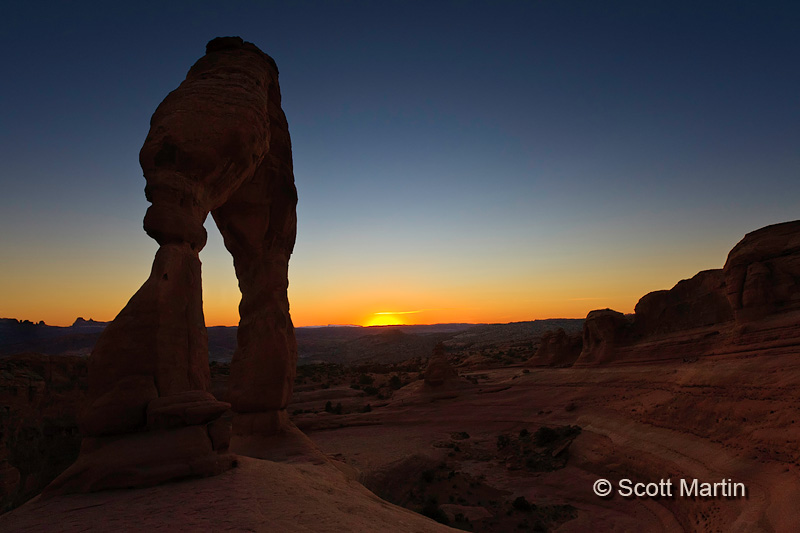
.
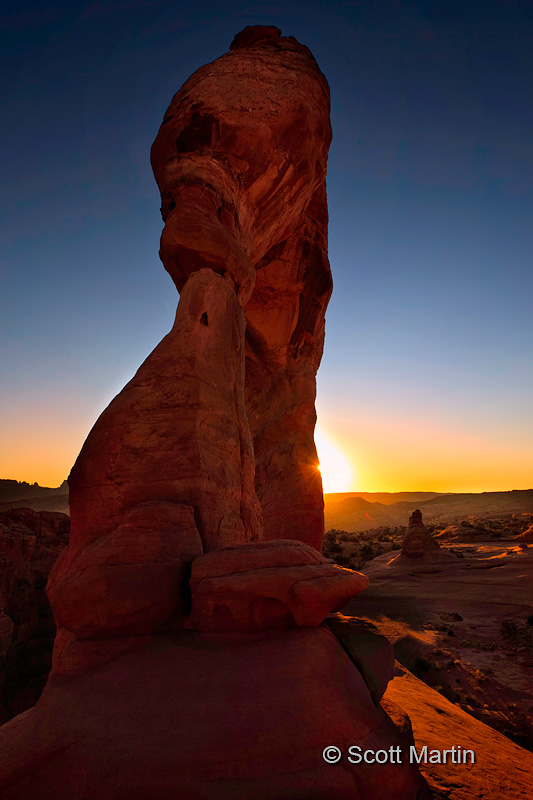
.
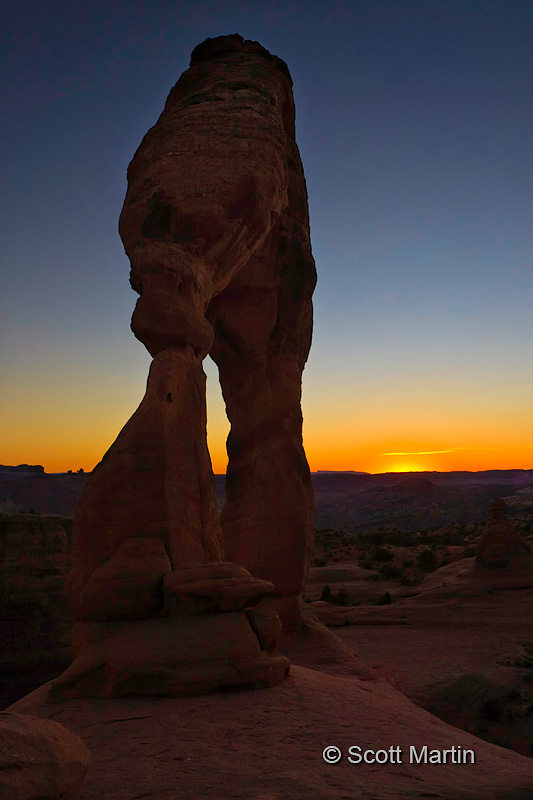
Seeing the Delicate Arch was one of the many highlights of our trip to the canyon lands area of the States and I trust these images encourage you to make the trip!
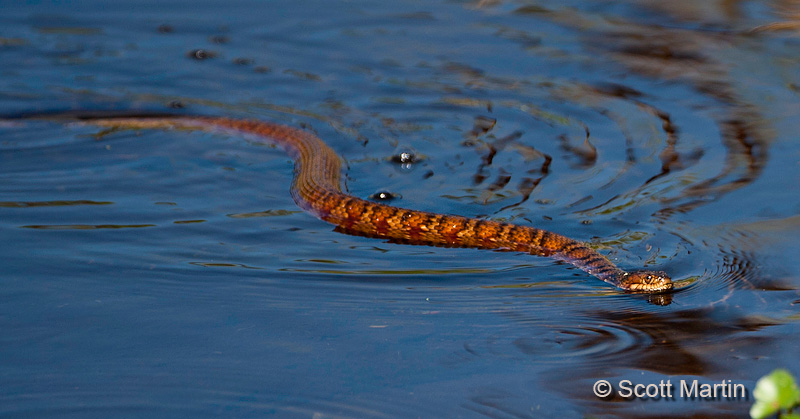
by Scott Martin Photography | Apr 8, 2012 | Blog, Travel, Wildlife
Orlando Wetland Park is located about forty-five minutes east of Orlando in Christmas, Florida. It’s a wonderful spot to walk and observe the diverse fauna and flora typical of Florida wetland habitat. While Deb and I wandered around the wetlands, quite lost in the vast expanse of the park, we met Josh and his family, who were serious herpetologists. They taught us a whole new way to observe wetlands, concentrating on the snakes and reptiles of the area as opposed to the birds we normally focus on. There is a whole new world out there, one that we will pay more attention to next time in the wetlands and I probably won’t wander as close to the water’s edge to get that low angle on a shore bird without also looking for fangs and rattles.
Florida Banded Water Snake

Pygmy Rattlesnake, a small rattler that is rather reclusive however we were told not to confuse its small size with its ability to really cause some grief if it sunk its fangs into your leg. Apparently, although rarely fatal in adults, a bite would cause a couple of days of severe pain regardless of treatment.
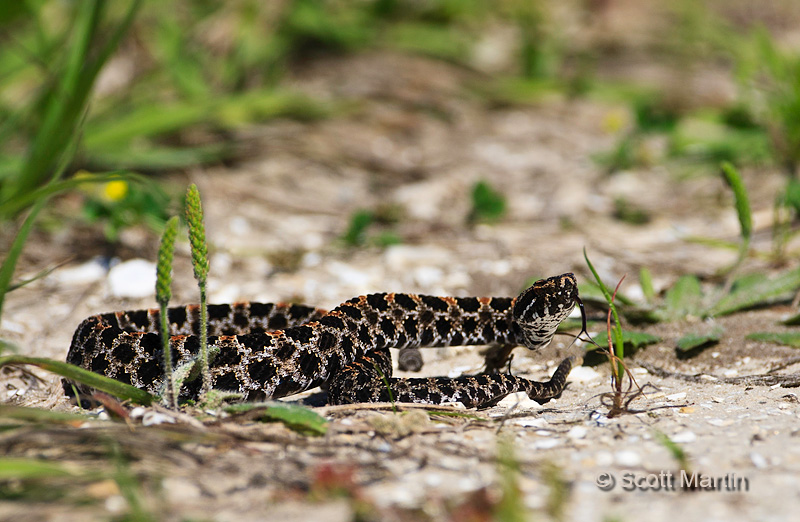
.
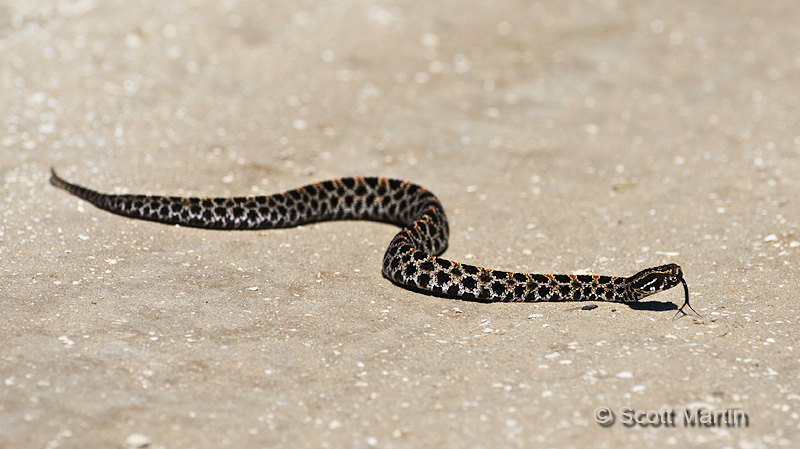
The Water Moccasin is a pit viper that is also found in Florida. Much larger than the Pygmy Rattler and although rarely aggressive towards humans does posses a potentially fatal bite. The Water Moccasin is the world’s only semiaquatic viper. The following image was taken at the Viera Wetlands, about thirty miles south-east of the Orlando Wetland Park.
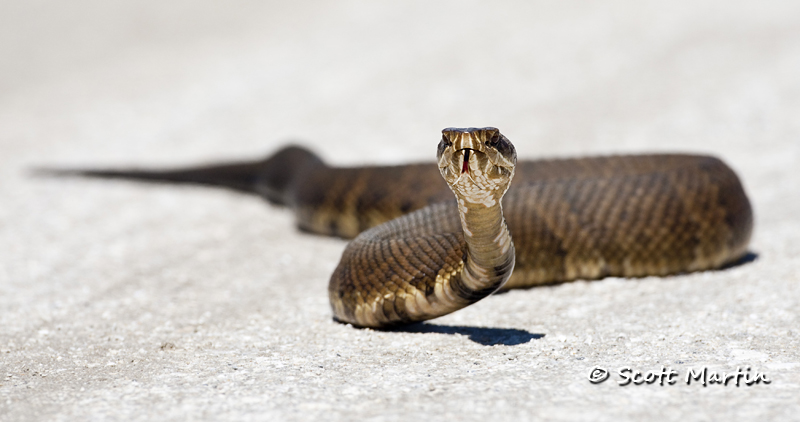
The Orlando Wetlands Park is also known for the large Garpike that inhabit some of its ponds. The gar has a body shape not unlike our Northern Pike, however their broad, teeth lined mouths give the Garpike a very distinctive look.
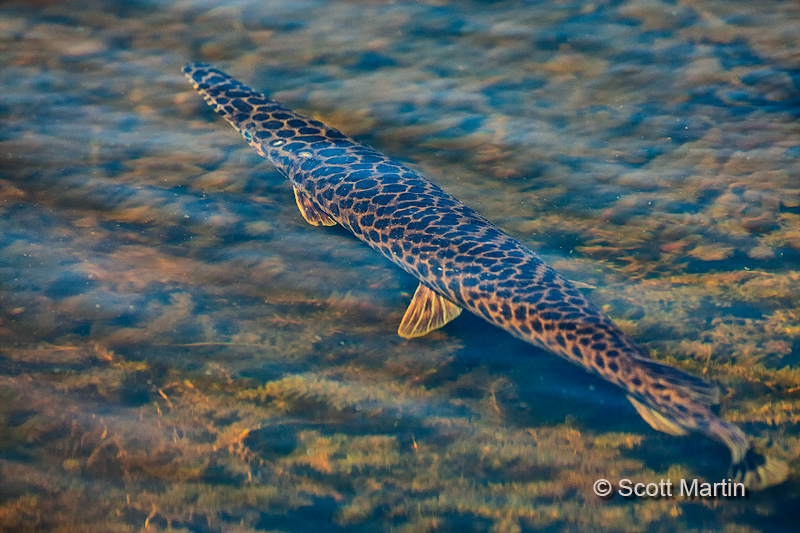
It’s almost impossible not to see alligators while walking around in Florida wetlands, however it is unusual to see new-born alligators as we did this year. We counted eight little gators, that Josh explained to us were probably only a day old and enjoyed watching them swimming around under the watchful eye of their mother who was lurking close by in the reeds. The young alligators were about ten inches long and almost cute….well maybe that’s an exaggeration.
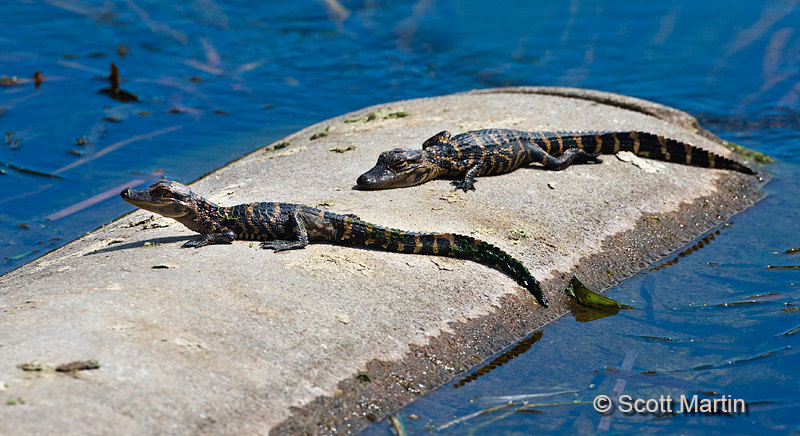
Someday they will look like this.
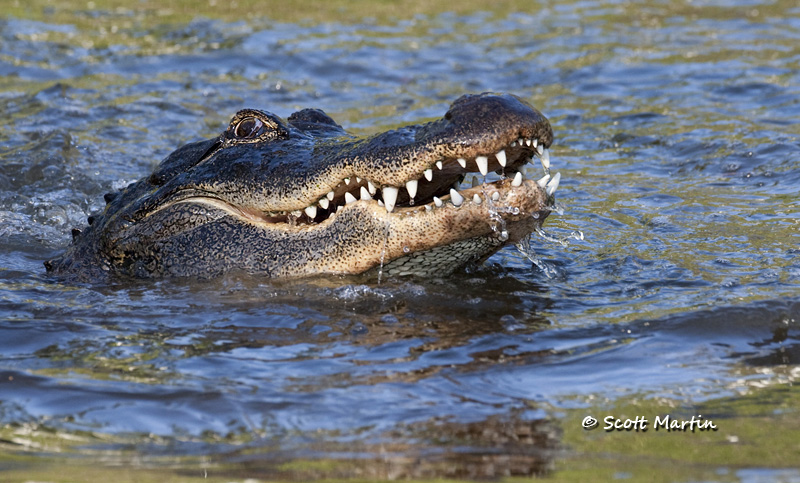
In keeping with the wildlife theme of this post, here are a couple of shots taken in Algonquin Park just before we headed to Florida for March break. This Red Fox was very friendly, infact as soon as I squatted down to get a low angle for these shots the fox came right up to the end of my lens, presumably looking for a handout.
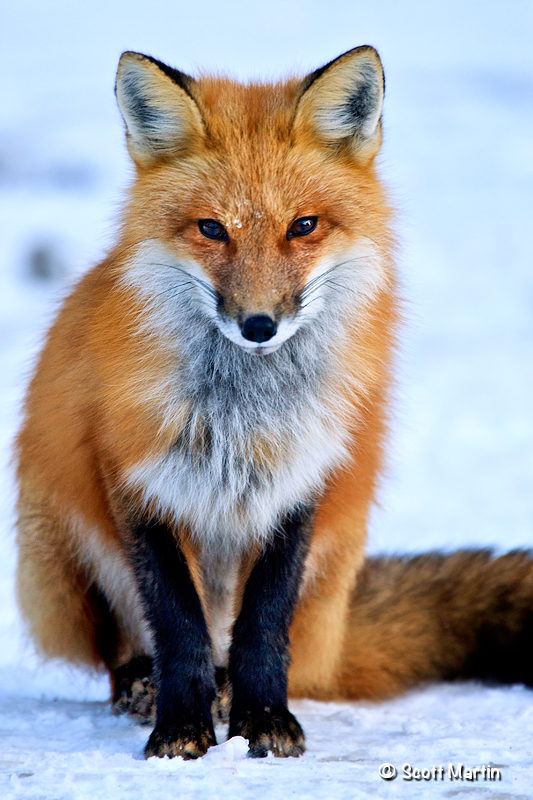
.
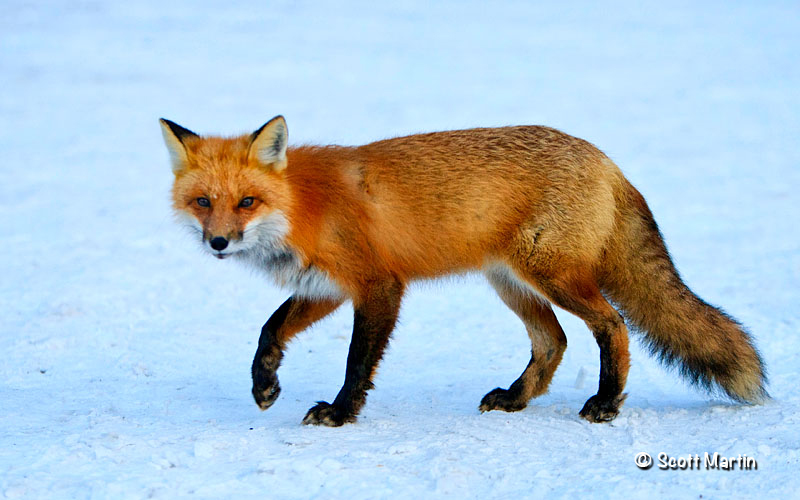
Other sample of wildlife can be seen in the gallery
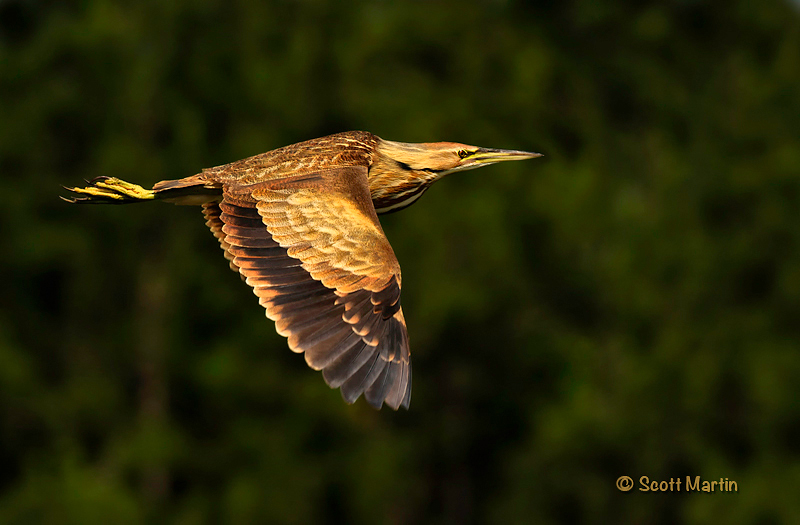
by Scott Martin Photography | Mar 29, 2012 | Birds, Blog, Shore Birds & Waterfowl
While vacationing in Florida two weeks ago, Deb and I visited the Orlando Wetlands Park in Christmas Florida. The park is actually about 45 minutes North East of Orlando, approximately twenty miles East of Merritt Island. It’s a fabulous wetland area that is 1650 acres in size and contains over twenty miles of hiking trails. Bicycles are allowed however cars are not, so be prepared to do a lot of walking when you are there. Deb and I didn’t have a lot of time available so we did an enjoyable six-mile loop seeing everything from rattle snakes, to alligators, to garpike and many different bird species, including the America Bittern shown in this post.
The American Bittern is a member of the Heron Family and in the summer months can be found in Canada. It winters in the south. Although the American Bittern is a common bird it is not often seen as it has the unique ability to blend well into the reeds in which it spends most of its time. They are typically solitary birds and when approached they often stay in one spot, extend their neck and point their head straight up into the air and in doing so blend right into their surroundings. They will even slowly sway their necks back & forth simulating the reeds moving in the wind. Consequently they are birds that are more often heard than seen which makes every nature and bird photographer happy when they finally get to capture one ‘on film’.
The Bittern below didn’t follow the usual pattern and flushed when Deb and walked by without knowing it was there. In fact we were startled when it flew up about ten feet beside us and headed to another location. Fortunately I had just enough time to get about six frames of the bird as he passed by us. Having a dark back ground for one of the shots was a bonus!

The wing detail in the American Bittern is impressive whether viewed from above or below.
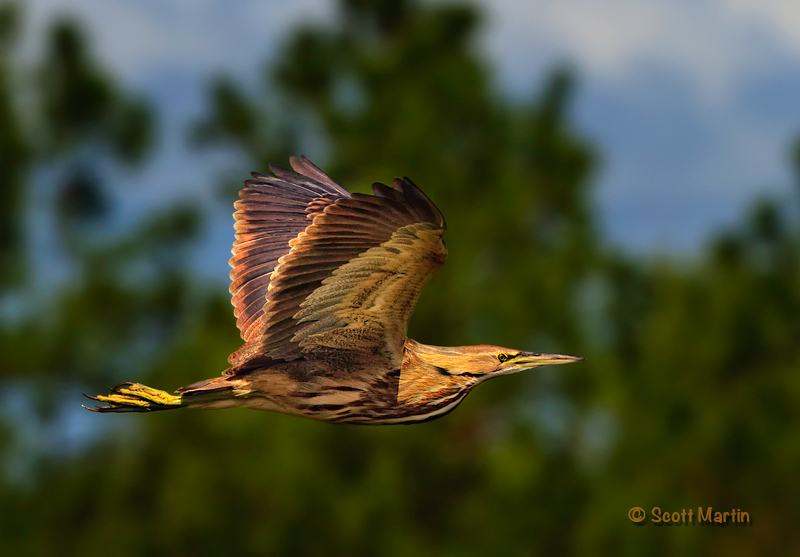
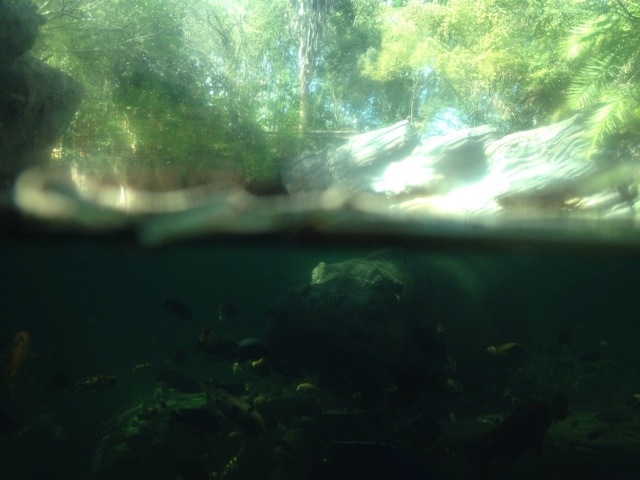
by Scott Martin Photography | Mar 17, 2012 | Blog, Educational, Wildlife
Sitting by the pool at our timeshare in Kissimmee, Florida with an iPad and playing with the Snapseed app that I’ve been referring to in the last few blog posts. I can’t recommend this app more highly and though it does cost $4.99 from the app store it is well worth the investment. Typically I use the app to fine tune images that by iPhone camera standards are already pretty good to start with. It has been my experience that post processing images does not often take poor images and make them acceptable but rather makes already good shots even better. Post processing rarely saves an image from the round file. That said I’ve been looking for an image that will take the post processing ability of an app to the limit, just to see what it’s capable of. I think this image fits the bill so before deleting it, it became a good test for Snapseed.
This shot is a challenge even with the best of gear. Normally you would expose for the dark water in the bottom of the image and use (in this case) at least a three stop hard edged ND Grad filter above the water line. With the iPhone 4S camera that is not possible so to take this image I focused over the hippo’s head with the focus point (which is also the metering point) half above and half below the water. The result creates severely blown highlights above the water and very underexposed shadows below the water, but at least there is some detail above and below the water line.
So, here is the original image as taken, clearly a ‘delete only’ capture.

Now, what could Snapseed do with this image? Although I have the app installed on both my phone and iPad, this image was processed on the iPad but could have easily been done directly from the phone. The time to process this image was about five minutes which is one of the advantages of Snapseed, it is very user friendly yet powerful in its scope.
Although this post is not intended as a Snapseed tutorial, in short this is how the shot was processed; water line leveled, image cropped, three different selections above the water level to reduce the blown highlights as much as possible, increase the contrast, adjust the saturation and white balance; one selection below the water line to brighten the water as much as possible, alter the contrast and tweak the white balance. The entire image was then adjusted for ambiance and structure. As is always the case, brightening shadows brings out the noise, which is very evident in the processed image. To date Snapseed has no way of noise reduction but hopefully that will come via way of a future update (NIK software has a fantastic NR program called Define which I use all the time as a CS 5 plug in, so hopefully it will show up some day in Snapseed). As a result of the noise, this image was not sharpened.
So here is the processed image. Still not a ‘keeper’ but a good example of what Snapseed can do when pushed well beyond what is normally necessary. It was a great image to play with and it’s not often you get the opportunity to photograph a hippo under water!
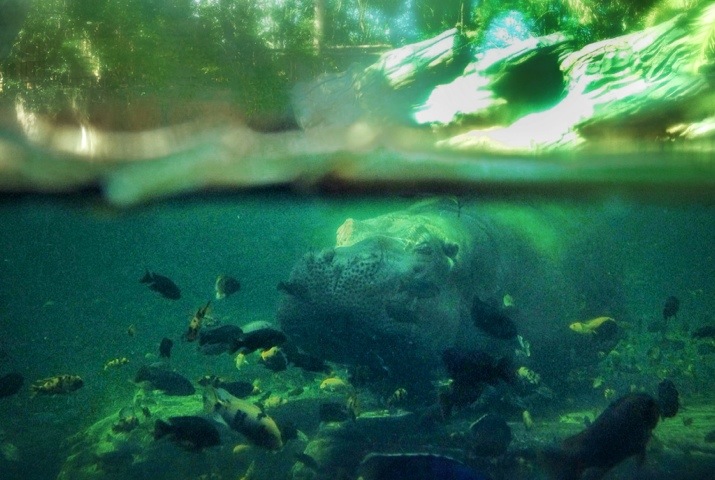
This image was taken in Disney’s Animal Kingdom Theme Park.
28.336041-81.533891
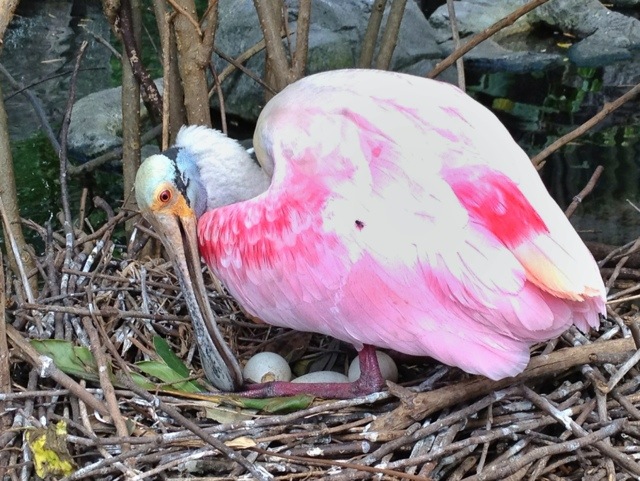
by Scott Martin Photography | Mar 16, 2012 | Birds, Blog, Shore Birds & Waterfowl, Travel
The Roseate Spoonbill has always been a favourite of mine and every trip to Florida we try to get a few shots of them. This year provided an interesting opportunity to photograph a Spoonbill with an iPhone. So please excuse the blown highlights in this image, but exposure control on the iPhone is not as user friendly as it should be 🙂
The Roseate Spoonbill is a bird who’s beak is ideally designed to allow it to eat effectively. The Spoonbill eats by waving the broad spoon shaped end of its beak in shallow water, disturbing the water and silt beneath it. It has very sensitive nerve cells that cause the beak to reflexly snap shut when prey is detected. The vibrant pink colours the Spoonbill takes on as it matures (they are born white) is a result of carotenoid pigments in algae which are consumed by crustaceans and then in turn eaten by the spoonbills. The Spoonbill’s nostrils are located at the base of their beaks so they are able to breath while the spoon end of the bill is submerged while foraging.
The following image was shot with the iPhone 4S and processed with the Snapseed app designed by NIK Software.

28.335975-81.53299



























Follow Scott Martin Photography